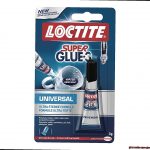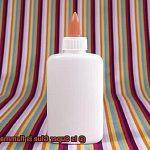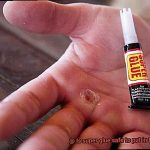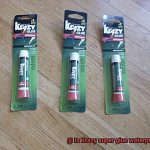Ever wondered if super glue is flammable after it dries?
It’s a common concern when dealing with this ultra-sticky stuff. As a self-proclaimed material detective, I couldn’t resist delving into the mysteries of super glue to uncover the truth.
Brace yourself for some mind-blowing revelations.
The Chemical Composition of Super Glue
Contents
Super glue, known scientifically as cyanoacrylate adhesive, has earned its reputation as a versatile and effective adhesive that bonds various materials with ease. What makes super glue so exceptional?
In this article, we will explore the chemical composition of super glue and uncover how each component contributes to its strength, durability, and other remarkable characteristics.
The Main Ingredient: Cyanoacrylate
At the core of super glue lies cyanoacrylate, an adhesive that works swiftly to form robust bonds within seconds. Cyanoacrylate belongs to a class of acrylic resins and undergoes a fascinating process called polymerization when exposed to moisture.
During this process, the cyanoacrylate molecules join together to create long chains, resulting in a solid and enduring bond.
Enhancing Performance with Additives
In addition to cyanoacrylate, super glue often contains additives that enhance its performance and shelf life. Let’s delve into some of these additives:
- Stabilizers: These compounds are included to thwart premature polymerization of the cyanoacrylate molecules. By inhibiting the reaction until the glue is applied, stabilizers extend the shelf life of super glue, ensuring it remains ready for use whenever needed.
- Thickeners: Thickeners play a pivotal role in controlling the viscosity of the glue. They provide the desired consistency for smooth application and also fill in gaps between surfaces, facilitating superior adhesion.
- Accelerators: These substances accelerate the curing process of super glue. By providing additional moisture for the cyanoacrylate to react with, accelerators expedite bonding and reduce waiting time.
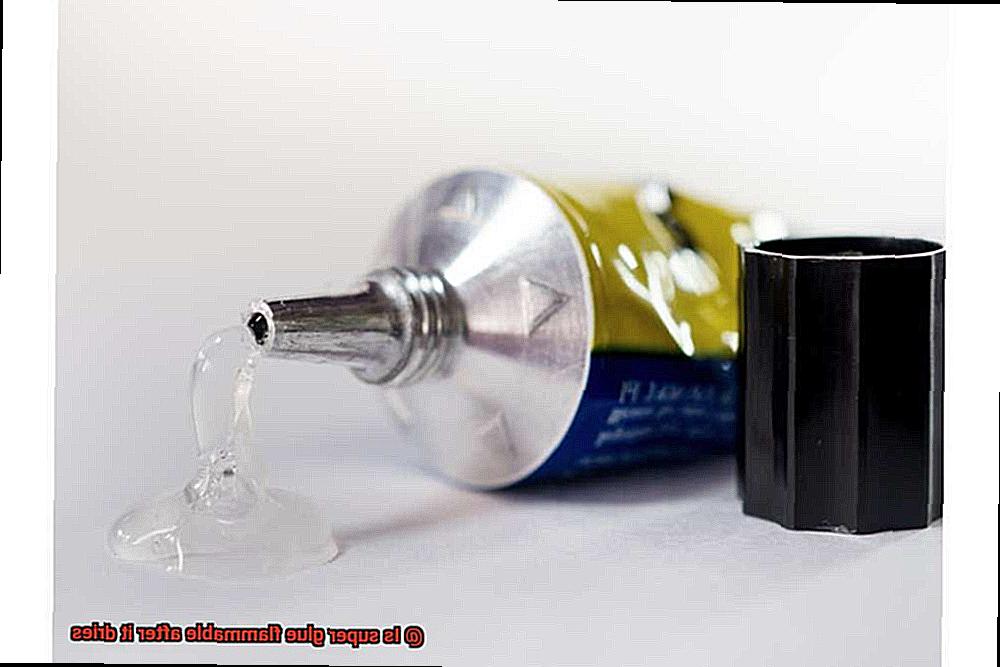
The Result: A Durable Bond
The combination of cyanoacrylate and these additives yields an adhesive with exceptional bonding properties. Super glue boasts remarkable adhesion capabilities on a wide range of materials, including plastic, metal, wood, and ceramics. Its rapid action ensures quick bonding, while the polymerization process creates a bond that can withstand heat, water, and chemicals.
How Does Super Glue React to Fire?
Today, we’re delving into the world of super glue and its reaction to fire. As an expert on all things adhesive, I’m here to share some fiery knowledge. So, hold on tight as we explore the fascinating realm of super glue and flames.
The Non-Flammable Nature:
Let’s start with the good news – super glue, also known as cyanoacrylate adhesive, is generally considered non-flammable.
Its chemical composition is made up of cyanoacrylate monomers that polymerize rapidly in the presence of moisture, creating a robust bond.
This means that the glue itself won’t easily catch fire or support combustion. But before you breathe a sigh of relief, let’s dive deeper into this story.
Materials Matter:
While super glue may not be flammable, the materials it’s applied to can still ignite. If you’ve used super glue to bond flammable materials like paper or wood, it’s crucial to remember that those materials can burst into flames when exposed to an open blaze.
So, exercise caution when using super glue near potential ignition sources and choose your materials wisely.
The Heat Factor:
Now here comes the twist – although super glue may not go up in flames, the extreme temperatures generated by a fire can weaken its bond. The intense heat can melt or break down the adhesive, resulting in a loss of adhesion between the bonded surfaces.
So, if you find yourself in a sticky situation during a fire (pun intended), be prepared for your super glue bond to potentially give way.
Safety First:
To ensure safe use of super glue around open flames or in fire-prone environments, it’s crucial to follow some safety guidelines. Work in well-ventilated areas to avoid heat build-up or fumes that could exacerbate fire risks.
Keep flammable materials away from potential ignition sources and be mindful of the materials you’re bonding. Additionally, in case of an accidental fire involving super glue, equip yourself with appropriate fire safety measures such as a Class B fire extinguisher or a dry chemical extinguishing agent.
Conclusion:
In conclusion, super glue itself may be non-flammable, but the materials it bonds can still ignite when exposed to fire. Moreover, the extreme heat generated by flames can weaken the adhesive bond. By taking proper precautions and following safety guidelines, you can ensure the safe and effective use of super glue across various applications. Stay safe, be mindful of your surroundings, and keep those flames at bay.
Is Super Glue Highly Flammable?
We’ve all been there – in the middle of a DIY project or a quick repair, reaching for that trusty tube of super glue. But then a thought crosses your mind: is super glue highly flammable? Can you trust it near an open flame or heat source? Let’s dive into the science behind this adhesive wonder and find out.
First things first, let’s understand what super glue is made of. Super glue, also known as cyanoacrylate adhesive, is derived from ethyl cyanoacetate. This compound undergoes a chemical reaction to form the adhesive, resulting in a fast-drying and strong bonding agent that can fix things in a flash.
Now, here’s the important part – while super glue itself is not highly flammable, it does contain some flammable components. The main culprit is the solvent used to dissolve the cyanoacrylate compound before application. Typically, acetone is used as the solvent to thin the glue and make it easy to apply.
Acetone is highly flammable and evaporates quickly at room temperature. So, when using super glue, exercise caution near open flames or heat sources. The acetone fumes can ignite if exposed to a spark or flame, creating a sticky situation you want to avoid.
But fear not. Once the solvent evaporates completely and the super glue cures, the risk of flammability significantly decreases. The cured adhesive forms a solid bond that is resistant to heat and flames. However, it’s still wise to avoid exposing cured super glue to extreme heat or fire as it may soften or break down under high temperatures.
It’s worth mentioning that different formulations of super glue may have varying levels of flammability. Gel-based or high-temperature resistant versions may have additional additives that alter their flammability properties. So, always read the product labels and safety data sheets provided by the manufacturer to understand the specific characteristics of the super glue you’re using.
In conclusion, while super glue contains flammable solvents, it is not considered highly flammable once fully cured. The cured adhesive forms a strong and heat-resistant bond. However, exercise caution during the application process when the solvent is present and follow the safety guidelines provided by the manufacturer.
Factors That Determine the Flammability of Super Glue
Super glue, also known as cyanoacrylate adhesive, possesses some intriguing flammable properties. While it is renowned for its exceptional bonding capabilities, it is imperative to understand the factors that determine its flammability. So, let’s delve into the captivating science behind it.
First and foremost, let’s explore the chemical composition of super glue. Most super glues contain a highly flammable liquid known as cyanoacrylate. This liquid evaporates swiftly when exposed to air, transforming into a hardened adhesive. However, even after the glue has dried, traces of cyanoacrylate may linger, contributing to its flammability.
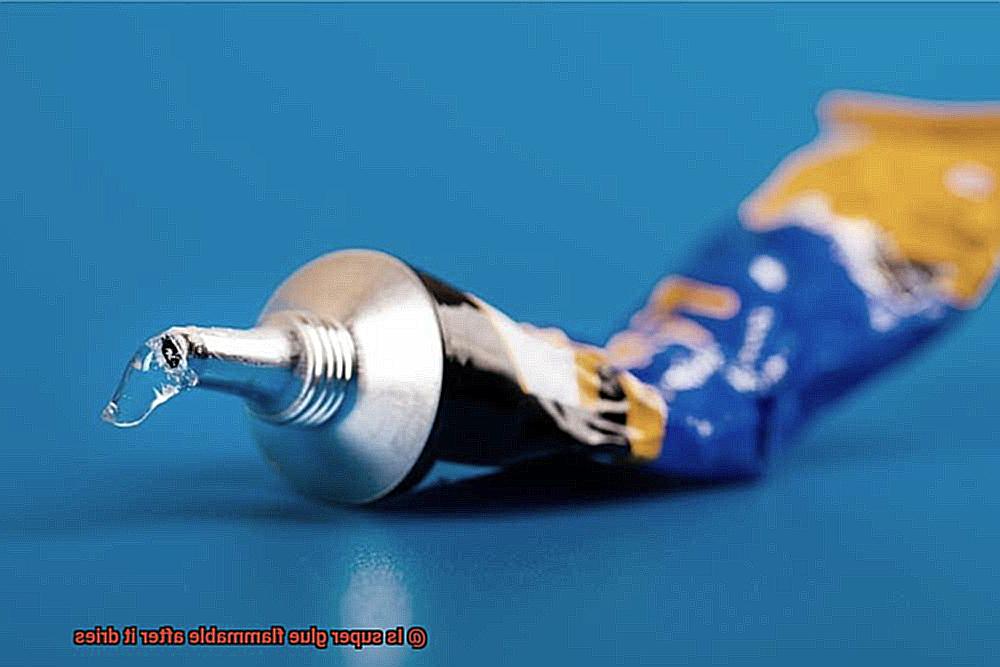
Volatility, another crucial factor, plays a significant role in determining flammability. Super glue exhibits high volatility due to the presence of cyanoacrylate. This rapid evaporation facilitates quick hardening but also renders the glue more susceptible to igniting when confronted with a source of ignition.
Moreover, each substance possesses an ignition temperature, which indicates the minimum temperature required for it to catch fire and sustain combustion. Super glue generally boasts a relatively low ignition temperature compared to other adhesives. Consequently, it ignites more effortlessly upon exposure to heat or flames.
Oxygen availability in the surrounding environment is another influential factor. Oxygen serves as a catalyst for combustion. Hence, if an adequate supply of oxygen is present, it fuels the burning process and heightens the likelihood of super glue catching fire.
The surface area of dried super glue also impacts its flammability. A thin layer of spread-out glue exposes a larger surface area to potential ignition sources. Consequently, this enlarged surface area offers more opportunities for the glue to ignite and sustain combustion.
Furthermore, additives or impurities within the glue formulation can affect its flammability. Certain accelerators or solvents added to the glue can increase volatility and make it more prone to catching fire. Similarly, impurities in raw materials used to manufacture super glue can alter its flammability properties.
The Risk of Ignition with Super Glue
Super glue, the adhesive superhero that can bond almost anything together. But does this sticky wonder come with a fiery risk? Let’s dive into the world of super glue and explore the dangers that may lurk behind its seemingly innocent tube.
When you apply super glue, it undergoes a process called polymerization, transforming from a liquid to a solid. As this chemical reaction takes place, a little bit of heat is released. But fear not. The heat generated during this process is typically not enough to set things ablaze.
However, there are certain factors that can increase the risk of ignition with super glue. Extreme temperatures or open flames can potentially ignite dried super glue. So keep your glued objects away from heat sources and sparks to avoid any unwanted infernos.
Another potential danger lies in the release of volatile organic compounds (VOCs) from super glue. These VOCs can evaporate at room temperature and form a flammable vapor cloud when they come into contact with an ignition source. Using large quantities of super glue or working in poorly ventilated spaces can heighten the chances of an accidental fire.
To ensure your safety while using super glue, always work in well-ventilated areas and apply only the necessary amount of adhesive. Excessive use can increase the risk of VOC release and potential ignition. Additionally, it’s wise to store your super glue in a cool and dry place, away from any exposure to high temperatures.
Remember, manufacturers provide safety instructions for a reason. Take the time to read and follow their guidelines on flammability and safe usage. By doing so, you can enjoy the remarkable bonding power of super glue without any fiery surprises.
Precautions to Take When Using Super Glue
If you’re ready to dive in and learn about some crucial precautions, buckle up because we’re about to embark on a safety journey that will keep you glued to these tips.
First things first, let’s talk about flammability. Super glue may be a superhero adhesive, but it has a weakness – heat and open flames. Trust me, you don’t want any unexpected fireworks while using it. So keep it away from extreme temperatures and flames. Let’s save the fire for s’mores.
Ventilation is key. Working in a well-ventilated area is essential when using super glue. Those fumes can be pretty harmful if inhaled in large quantities. So throw open those windows, turn on the fans, and let the fresh air in. Breathe easy, my friends.
Protecting your hands is crucial. Super glue can bond skin together faster than you can say “oops.” That’s why donning some protective gloves is a smart move. Not only will they keep your hands safe from accidental bonding, but they’ll also guard against spills and splashes. Safety first, always.
Speaking of safety, let’s not forget about our little ones and furry friends. Super glue can be toxic if ingested, so make sure to store it out of their reach. Lock it up in a cabinet or place it high on a shelf to avoid any unwanted glue-eating adventures. Glue is for fixing things, not snacking.

Now, let’s talk about food and beverages. Keep your super glue away from them. Accidentally contaminating your lunch with the adhesive can lead to ingestion and potential health risks. Designate a separate workspace for your glue adventures and keep it far away from anything edible. Glue and sandwiches just don’t mix.
To ensure a strong bond, make sure your surfaces are clean and dry. Moisture can hinder the effectiveness of super glue, so wipe away any water or oil. If you’re working with smooth surfaces, roughen them up a bit for an even stronger bond. We want our glue to work its magic, don’t we? Let’s stick it right.
Accidents happen, but don’t panic. If you spill some glue or get it on your skin, take a deep breath and stay calm. Soak the affected area in warm soapy water or use acetone to remove the glue. But remember, if the adhesive gets in your eyes, is ingested, or causes severe skin irritation, seek medical advice immediately. Safety always comes first.
Last but not least, always read and follow the instructions provided by the manufacturer. Each brand may have specific precautions and recommendations that can make your super glue experience safe and effective. Knowledge is power, my friends. Let’s be informed superheroes of super glue.
MgTtR5YTzvI” >
Also Read: How Long Does Super Glue Take to Dry?
Conclusion
In conclusion, once super glue dries, it is generally considered non-flammable. Its chemical makeup, primarily cyanoacrylate, doesn’t easily burst into flames or support combustion. However, it’s crucial to recognize that if the materials bonded with super glue are flammable, they can still catch fire. So when you’re using super glue on things like paper or wood that can ignite, exercise caution to prevent potential infernos.
While the glue itself may not be flammable, scorching temperatures from a fire can weaken its bond. The blistering heat can melt or break down the adhesive, causing surfaces to lose their grip.
To ensure safe usage of super glue near open flames or in places prone to fires, take certain precautions. Work in well-ventilated areas to avoid excessive heat buildup and fumes that could escalate fire risks. Keep flammable materials far away from anything that could ignite them. Additionally, make wise material choices when bonding with super glue and adhere to safety guidelines provided by the manufacturer.
By following these safety measures and remaining aware of your surroundings, you can effectively use super glue while minimizing the chances of accidents or fires.


